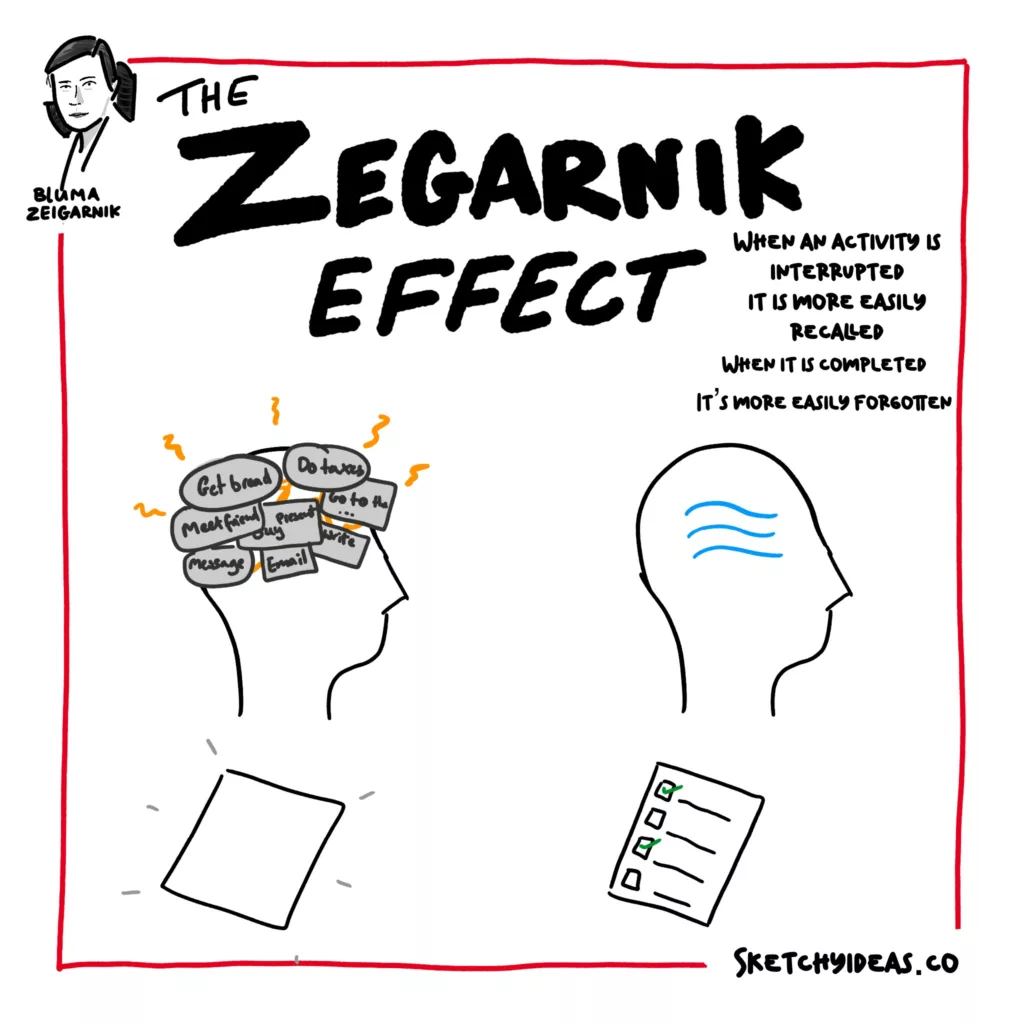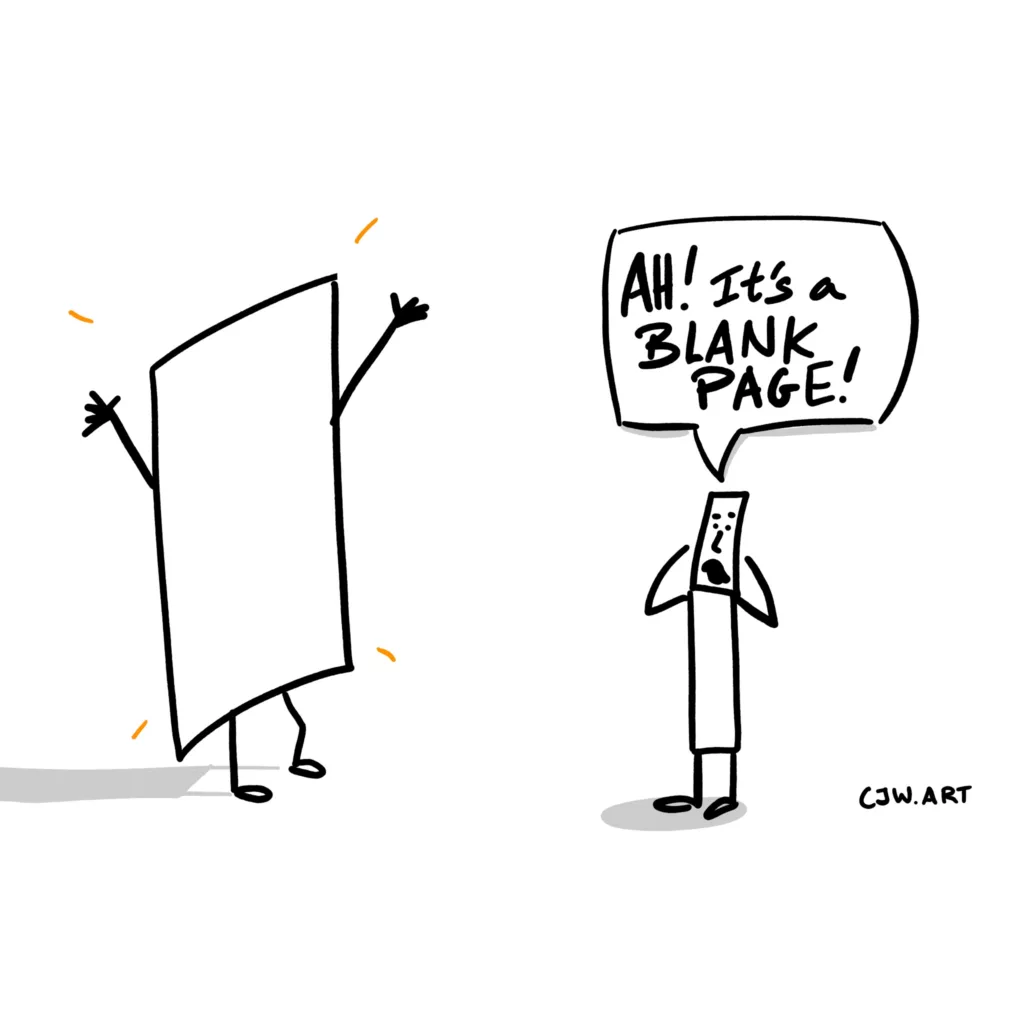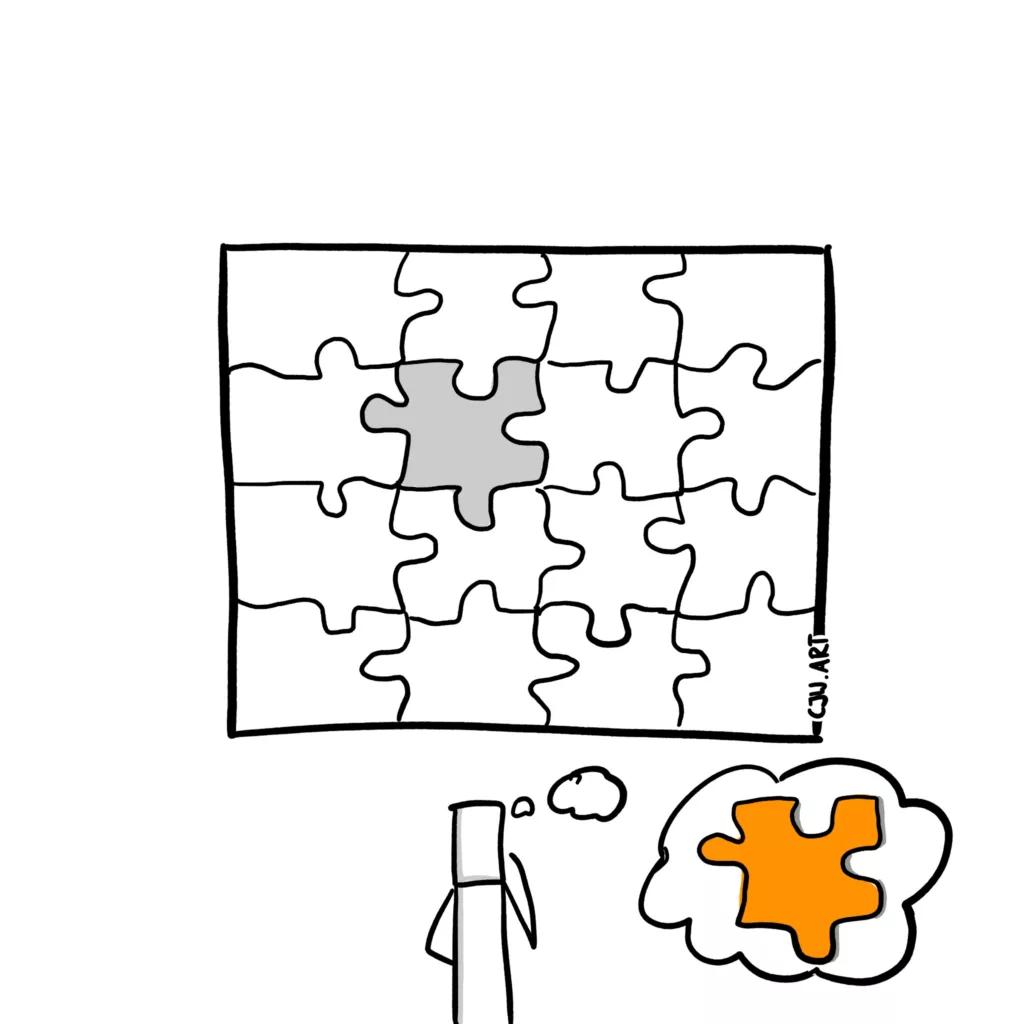Have you ever been told a number and desperately tried to remember it? Maybe you repeated it over and over again in your head till you could write it down on paper or on your phone. (If not, maybe this is a millennial and older experience!)
What happened when you wrote it down or no longer needed it? I’d bet you forgot it PDQ.
That’s the power of today’s mental model, the Zegarnik effect. In this article, I’ll take you through what it is, and how you can use it in some surprising situations.
What is the Zegarnik effect?
The Zegarnik effect is the psychological phenomenon where we remember incomplete tasks better than complete ones.

It was first observed by the psychologist Bluma Zeigarnik when he noticed servers in restaurants could remember long and complicated orders to give to the kitchen but forgot them once they had passed on the details.
This led him to conduct a series of experiments into the effect.
Why it matters?
It’s never been harder to focus.
People say we’re living in the attention economy and that’s why the ability to focus has never been more valuable. The Zegarnik effect gives us a tool to help target our attention to focus or forget certain tasks or ideas.
This makes it a powerful tool for productivity and effective learning.
How to use the Zegarnik effect?
There are a multitude of applications for the Zegarnik effect, but here are some of the most obvious.
Task management
Sometimes it’s better to leave a task incomplete.
If you want to make sure you get a task done, but can’t complete it today, it’s better to stop at an awkward moment than find a good stopping point. That way it stays in your mind and makes it easier to restart your task.
You also don’t have to deal with the blank page when you start the next day.

So next time you are going to get a drink or take a work break, don’t finish that sentence!
Learning
There are two important things to consider when it comes to learning.
First, if you’ve “finished” something, you’re more likely to forget it. So if you have a subject you need to study for a test (and then not again for many months) you’ll probably forget a lot after that test. But it works at a smaller level too. If you finish the lecture, video, book, you’re less likely to remember.
But we can invert that.

If we break up and disrupt our learning, we can make what we are learning stick more, and help practice authentic retrieval. For example, we can suddenly switch topics, or use space repetition apps for sudden “tests” to activate our recall and retrieval processes.
This process is much more uncomfortable and harder to learn with but uses the principle of desirable difficulties for improved long-term outcomes.
Be more creative
Ever struggled with a problem trying every idea you can think of but got nowhere?
Then you take a break and the solution either comes suddenly to you, or when you come back to the task you immediately know the answer.
That’s because you’ve been using a second system of thinking.
This subconscious thinking is great for processing vast amounts of data and information but is harder to access. The Zegarnik effect is one tool to help you access it.
By leaving the task incomplete, it stays in the back of your mind, and that lets your subconscious get to work on it.
Reduce stress
A final and crucial point to consider is our stress.
When we are keeping multiple tasks in our head, we place a great cognitive load on us. It makes us revisit and think through every item so we don’t forget anything. We can alleviate this stress in two ways.
- Completing tasks (especially quick ones) before moving on to new projects
- Writing tasks down (using a task manager or via a brain dump) to get them out of our head
These ideas were hugely influential in David Allen’s Getting Things Done which wasn’t just about doing more but addressing the stress that often comes along with tasks.
Conclusion
Although discovered in a restaurant, the Zegarnik effect has far more application than just remembering food orders. By understanding it and how to use it, you can ensure you manage your stress levels and your productivity.

Leave a Reply